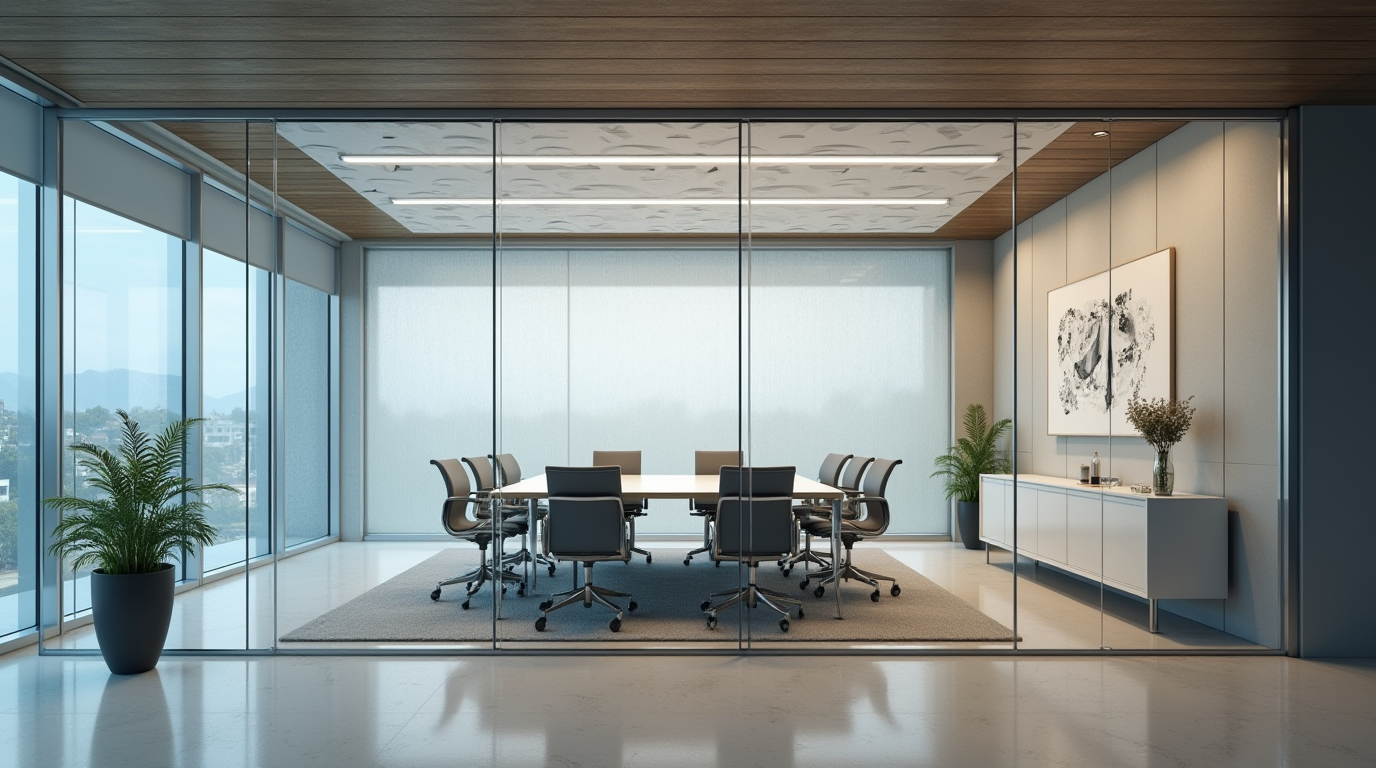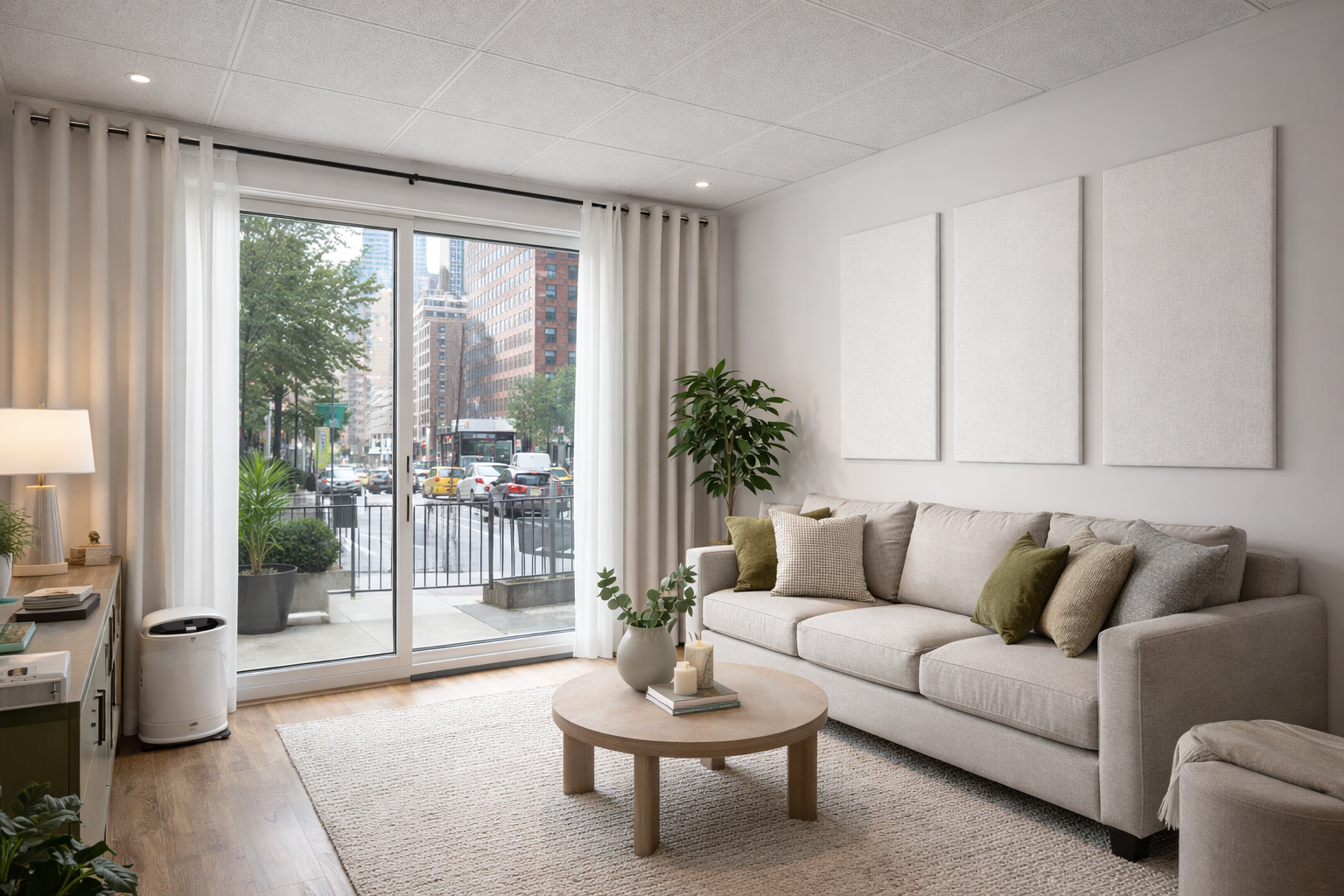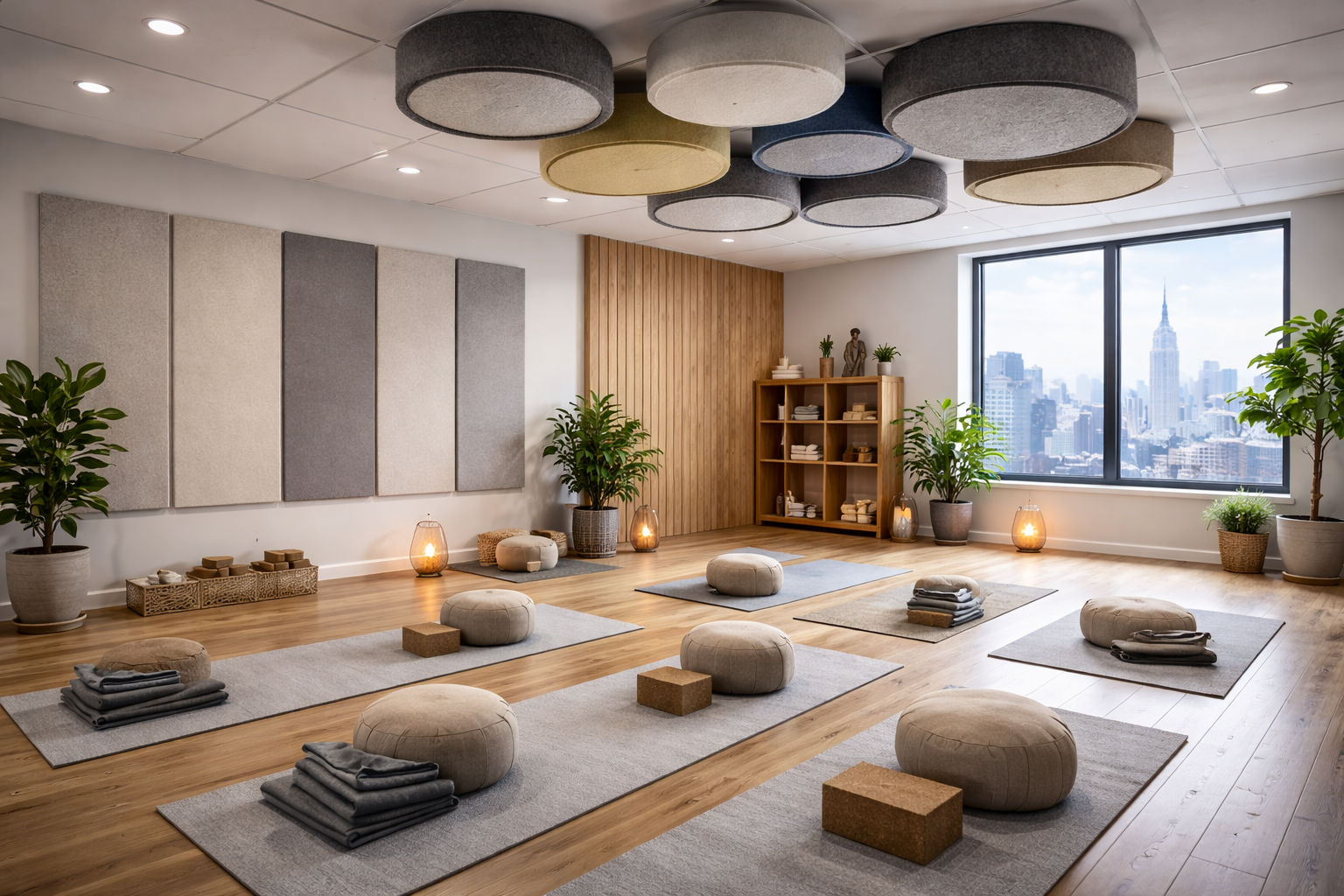Transforming Office Acoustics for Productive Workspaces
Poor office acoustics are one of the most underestimated barriers to productivity. Noise in the workplace doesn't just distract—it drains focus, increases stress, and leads to communication breakdowns. Many companies invest in furniture, lighting, and layout but overlook the way sound travels through the space.
The wrong acoustic environment can cause fatigue and frustration, from constant chatter to ringing phones and HVAC hum. Even small improvements in sound control can boost focus, reduce employee complaints, and support better collaboration.
This article explores practical office acoustics solutions—what causes problems, how to assess your space, and which treatments make the most impact. Whether you're managing a corporate office, startup loft, or call center, better acoustics equal better performance.
The Office Noise Landscape
In most modern workplaces, noise comes from multiple sources: conversations, office equipment, HVAC systems, foot traffic, and open layouts. With the rise of collaborative spaces and glass-walled meeting rooms, managing acoustics in offices has become even more important.
Open-plan offices may encourage communication, but they often sacrifice focus. Private offices have their issues—like echo or poor sound isolation. Each layout requires a different approach to acoustic treatment.
Noise doesn't just annoy—it costs. Studies show that distractions can cut productivity by up to 40%. Poor workplace acoustics lead to higher stress, lower satisfaction, and even absenteeism. Sound isn't just a comfort issue—it's a business issue.
Understanding the noise landscape in your office is the first step to making meaningful improvements.
What Can We Learn From Noise Experiments?
Decades of research show that noise directly affects how we think, work, and communicate. One well-known finding is the Lombard Effect—when people speak louder in response to background noise. In offices, this creates a ripple of rising volume that worsens the problem.
Studies on speech intelligibility show that when people can overhear conversations clearly, it becomes one of the biggest sources of distraction. Even if you're not part of the conversation, your brain can't help but listen.
These insights matter. They show us that acoustic solutions for offices aren't just about silence—they're about controlling what people hear, how clearly they hear it, and when.
Learning how does soundproofing works can help you understand the science behind controlling unwanted noise.
Applying this research to real-world offices means using materials and layouts that absorb and diffuse sound instead of letting it bounce unchecked. It means creating spaces that support both focus and interaction, depending on the task at hand.
Have You Considered Your Office's Acoustics?
Most workplace managers notice lighting and furniture before they notice sound. But once you tune in, the signs are hard to ignore. If your team constantly complains about distractions, talks in hushed tones, or avoids certain areas—it's time to ask some questions.
- Are conversations in meeting rooms echoing?
- Are conversations from offices in the hallway audible?
- Do people start to speak louder during calls?
These are all signs your office acoustics need attention. It's easy to overlook the role sound plays in daily comfort. But once you address it, the change is immediate and measurable. Workplace acoustics aren't just a technical detail—they're part of your team's experience.
Assessing Your Office Acoustic Environment
You don't need expensive gear to tell when a space has poor acoustics. If voices seem to linger, sound bounces off hard surfaces, or different teams are constantly disturbing each other, you've got a noise problem.
Walk the office during busy hours. Listen for hotspots where sound builds up. Use a decibel meter app to track sound levels in common areas, meeting rooms, and private offices. Even basic readings will highlight problem zones.
Pay attention to the layout. Large, flat surfaces and high ceilings amplify sound. Glass walls look great but reflect noise unless treated. Focus on areas where communication and concentration are most critical.
Most importantly—talk to your team. Employee feedback is essential when evaluating how to improve acoustics in office settings. People know where the distractions are. They'll tell you what's working and what's not.
How to Improve Acoustics in an Office
Fixing office acoustics isn't about making the space silent—it's about making it sound right. A good acoustic plan balances collaboration and privacy, energy, and calm.
Start with a layered approach. Use acoustic panels on walls to absorb sound where it reflects most. Treat ceilings with suspended clouds or baffles to reduce overhead echo. These changes reduce noise without making the space feel closed off.
Place acoustic treatments strategically. Meeting rooms need clarity. Open areas need softening. Phone booths and Zoom rooms need isolation. Think about how each zone functions and treat it accordingly.
If you're serious about change, go beyond surfaces. Sound masking systems add neutral background noise that makes conversations less distracting. These systems help create a consistent, low-noise environment.
Wondering how to improve acoustics in an office without a major redesign? Start with one area—then expand. Even small changes can reduce distractions and improve productivity across the board.
Office Noise Reduction Solutions for Different Spaces
Each office area has different acoustic needs. A blanket approach doesn't work—you need targeted office noise reduction solutions that suit each space's use.
Reception areas should feel welcoming, not chaotic. Sound-absorbing ceiling tiles and wall panels can reduce the echo that often comes with open lobbies and hard surfaces.
In open workspaces, the goal is to reduce background noise and allow employees to focus. Use acoustic partitions between desks, install hanging ceiling baffles, and place soft furnishings to break up sound reflection. These treatments also help contain sound in group zones.
Conference rooms and Zoom spaces need clarity. Echo and room reverb can frustrate calls. Wall-mounted acoustic panels and ceiling clouds will improve speech intelligibility and reduce fatigue.
Conference room soundproofing is especially essential for these high-traffic areas.
The focus for private offices is isolation. A well-treated room with wall panels, a solid-core door, and floor rugs can create a quieter, more productive space.
Break rooms and common areas still benefit from acoustic treatment. These spaces often get loud quickly. Adding subtle wall panels or ceiling absorbers helps control the sound without changing the vibe.
Call centers and customer service floors are some of the noisiest work environments. Smart zoning, panel systems, and acoustic ceiling treatment can reduce voice overlap and stress.
Acoustic Solutions for Offices
What works when it comes to fixing office acoustics? The best strategies combine multiple layers of treatment that work together to absorb, block, and manage sound—not just reduce volume but improve clarity and comfort.
✅ Acoustic panels
These are mounted on walls or ceilings to absorb mid- and high-frequency sounds. They reduce echoes and are well-suited for use in meeting rooms and collaboration areas.
✅ Ceiling treatments
In large open spaces, overhead elements such as acoustic clouds, tiles and baffles are commonly used. They are also good at reducing noise from HVAC systems and equipment reflecting off the ceiling.
✅ Flooring upgrades
Hard floors reflect noise. Replacing or covering them with carpet, rugs, or acoustic underlay helps reduce footstep impact and adds an important layer of sound control, especially in busy office corridors and common areas.
✅ Acoustic furniture
Functional and effective. High-backed chairs, soft booths, and sound-absorbing dividers don't just offer seating or layout structure—they actively support office noise reduction solutions by breaking up open-plan acoustics and providing semi-private zones.
✅ Sound masking systems
These systems emit a soft, consistent background noise that reduces the amount of nearby speech that can be heard or understood. They're ideal for open-plan offices where privacy is limited but visual openness is needed.
These acoustic solutions for offices help create balanced environments—spaces that support conversation, concentration, and comfort throughout the workday, especially if you use all of these tools together.
Material Considerations for Office Acoustic Treatments
Not all materials used in office acoustics are created equal. When choosing products for your space, evaluating how they perform, how long they'll last, and whether they meet safety and sustainability standards is important.
Start with NRC ratings—Noise Reduction Coefficient. This number tells you how much sound a material absorbs (from 0.0 to 1.0). For most office environments, materials with an NRC of 0.70 or above are recommended for effective office noise reduction solutions. Higher ratings are especially useful in conference rooms, phone booths, and open-plan areas with many reflective surfaces.
Durability is just as important. Office acoustic panels should be tough enough to handle daily contact, cleaning, and occasional bumps. Look for reinforced edges, washable fabrics, and commercial-grade upholstery options.
Fire safety is non-negotiable. Always choose acoustic solutions for offices that are Class A fire-rated and compliant with local building codes. This is especially important for public or shared commercial buildings.
Eco-conscious options are now widely available, too. Recycled PET panels, natural wool-based insulation, and low-emission adhesives offer strong acoustic performance without compromising indoor air quality or sustainability goals.
Material Comparison for Office Acoustic Treatments
|
Material Type |
NRC Rating Range |
Best For |
Pros |
Cons |
|
Fiberglass Core Panels |
0.80 – 1.00 |
Walls, ceilings, high-performance use |
Excellent absorption, Class A fire rating |
Requires fabric finish, not impact-proof |
|
Mineral Wool Panels |
0.75 – 0.95 |
Ceilings, open spaces, HVAC wraps |
Great for low-frequency absorption |
Can shed fibers if not sealed |
|
Acoustic Foam |
0.50 – 0.80 |
DIY setups, podcast rooms |
Lightweight, easy to install |
Less effective for low frequencies |
|
PET Felt Panels |
0.70 – 0.90 |
Sustainable office designs |
Made from recycled materials, good durability |
Not as thick as fiberglass-based panels |
|
Wood Slat Panels |
0.60 – 0.85 (with backing) |
High-end spaces, visual accents |
Modern aesthetic, combines absorption & diffusion |
Higher cost, limited fire-rated options |
|
Fabric-Wrapped Panels |
0.75 – 1.00 |
General wall applications |
Customizable look, high absorption |
Fabric needs to be acoustically transparent |
Choosing the right materials depends on the space, use case, and your priorities—whether it's performance, design, sustainability, or all three. A well-balanced acoustic treatment plan considers every detail, including what's behind the surface.
Workplace Acoustics and Office Culture
How your office soundproofing determines how your team works. Workplace acoustics affect office comfort, behavior, communication, and even company culture.
When commercial soundproofing is overlooked, productivity in collaborative environments can suffer.On the other hand, a well-designed soundscape encourages you to use the space for its intended purpose and focus on necessary tasks.
A good solution is to create acoustic zones: areas for concentration, discussion, private conversations, or casual socializing. These zones can coexist without competing in terms of volume.
Balancing privacy and transparency is key. In many modern offices, glass walls, and open layouts promote visual openness but compromise acoustic comfort. Acoustic panels, soft surfaces, and soundproof office solutions help restore balance—so people can speak freely without being overheard or distracted.
By proactively addressing sound, you're not just improving comfort. You're also showing your team that their focus, well-being, and work experience matter.
Implementing a Soundproof Office Strategy
You don't have to remodel your office overnight. Based on your budget and priorities, a soundproofing strategy can be implemented room by room.
Start with identifying problem areas: noisy meeting rooms, distracting open spaces and echo-laden private offices. Then create a phased plan, starting with the most effective upgrades, such as acoustical ceilings or targeted wall panels.
Be mindful of building constraints. Historic spaces, leased offices, or open ceilings may limit options—but there's always a workaround. Many office acoustics solutions are modular, surface-mounted, and non-destructive.
Track results by gathering feedback and monitoring productivity or satisfaction surveys. Clients often report measurable gains in employee focus, fewer complaints, and a more comfortable working environment.
Whether you need help treating a single meeting room or developing a complete soundproof office plan, New York Soundproofing is here to help. We design and install custom solutions that actually work without disrupting your workflow or your design.
Visit newyorksoundproofing.com to schedule a consultation or request a site assessment. Let's make your office sound as smart as it looks.



